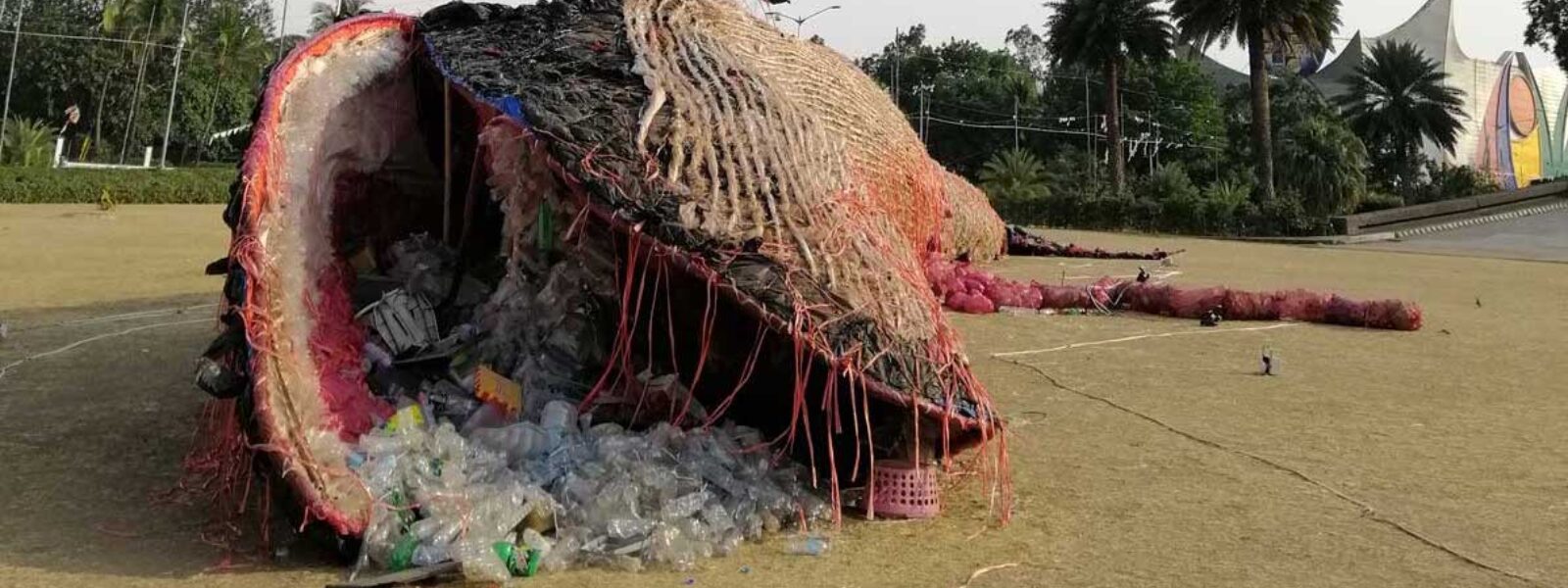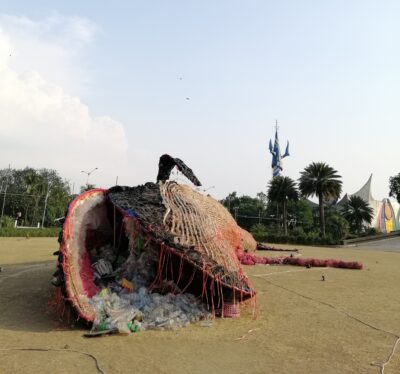
In the Philippines: Artist, Biboy Royong Presents "The Cry of the Dead Whale"
As tons of plastics pollute our oceans every day, marine animals do their best to keep swimming. Even in Marine Protected Areas and the deepest of the deep sea, plastic waste proliferates. And marine mammals can’t escape it. Just two months ago, a dead sperm whale washed ashore in the Philippines…with 88 pounds of plastic in its stomach. A month later, a dead, pregnant sperm whale washed up on a beach in Italy with almost 50 pounds of plastic in her stomach. These disturbing tragedies are beginning to occur often, and UNESCO reports that more than 100,000 marine mammals die from plastic pollution every year.
Last month, Philippines artist Biboy Royong sent a powerful message about plastic pollution to his country and to the world. He revealed his latest work of art, a 78-foot-long whale sculpture made entirely of plastics recovered from the ocean. Royong built the sculpture using materials such as single-use grocery bags, water bottles, cups, straws, cutlery, and ghost fishing gear. Royong named this piece “the Cry of the Dead Whale,” which he installed in front of the Cultural Center of the Philippines in Manila Bay to demonstrate the heartbreaking impact of human plastic consumption.
"The Philippines is the 3rd largest contributor to plastic waste in our oceans. Sightings of different sea creatures washing ashore in our coastlines with tons of plastics inside are no longer news. As the problem grew bigger, people no longer bothered to ask why it happens and what can be done to stop it. The challenge was to make people see the effects of plastic wastes in our oceans. To achieve this, we needed to effectively visualize the worsening case of plastic pollution," said artist, Biboy Royong in an interview with Earth Island Institute Philippines staff member, Karl Ramirez.


As we absorb the painful new realities of increasing environmental degradations presented by the media, it’s difficult to feel anything but numb when we hear one tragic news story after another. But in a world of information overload, Royong’s whale sculpture holds an air of novelty. By creating something physical and tangible, beyond the black mirror, Royong effectively sends the message that plastic pollution is a deathly anthropogenic issue and a threat to even the largest of marine creatures.

What can you do about plastic waste?
- Support and donate to organizations like IMMP that are working to eliminate unsustainable fishing practices.
- Support artists like Biboy Royong who employ creative art forms to expose environmental problems.
- Quit single-use plastics. Ditch the plastic grocery bags and plastic water bottles and reduce your online shopping and take-out (packaging). Buy a reusable water bottle - refill it, wash it, keep it, love it.
- Support efforts in your town, city or state to ban use of plastics and substitute materials that break down to harmless components.
- If you want more tips on ways to reduce your plastic consumption and help save the ocean, check back on our blog soon. I’m writing a blog where I discuss how to make your own foods that are normally packaged in plastic (think peanut butter or nut milk) and how to repurpose jars/containers - like washing your salsa jar and using it to store leftovers or shop bulk. I’ll even include how to make your own 4-ingredient plastic-free deodorant that actually works!
We are working to prevent dumping and to clean up plastics in the Ocean. Our Dolphin Safe tuna standards help protect dolphins and all marine organisms from unsustainable fishing practices. Your donations are key to our success. Please donate now to help protect our oceans!
Photo credit: Advocacy Team, Earth Island Institute Philippines
